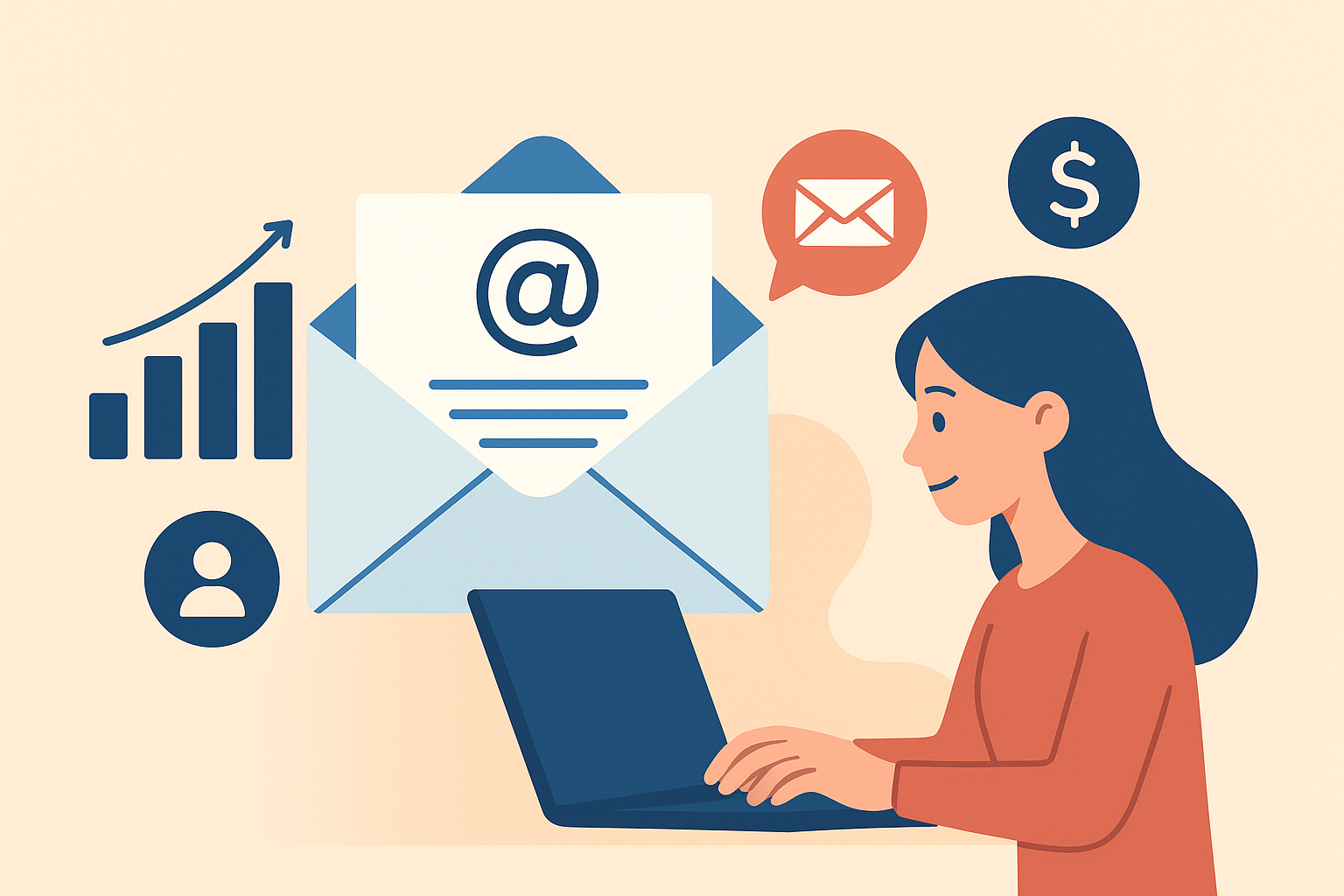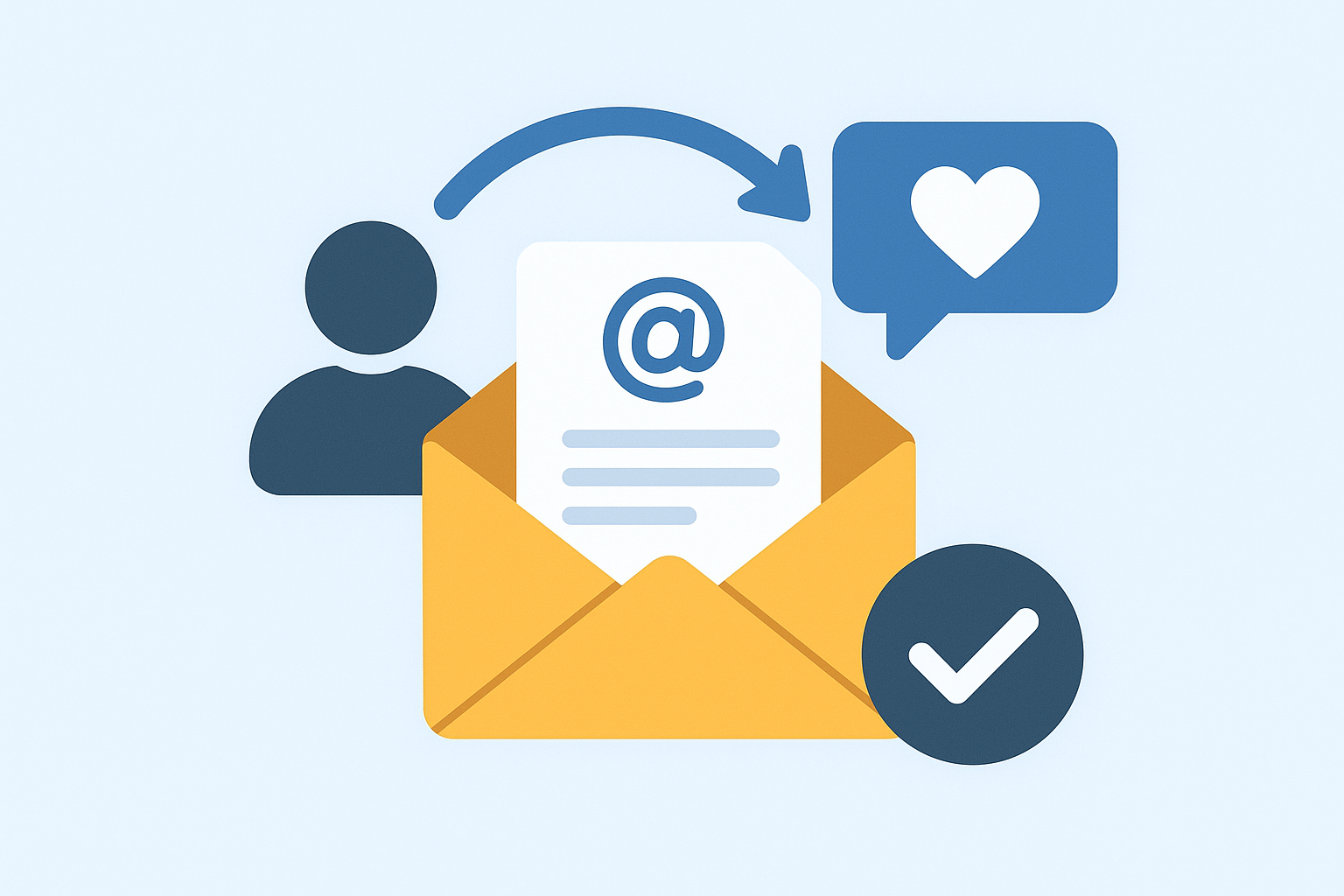Unlock powerful websites and sales funnels built to convert, with zero upfront costs. Let’s bring your vision to life and drive real results together.

Email marketing strategies have become one of the most powerful tools for businesses to reach, engage, and convert their audience. From personalized campaigns to automated workflows, modern email marketing provides unparalleled opportunities for growth. This guide will explore innovative email marketing techniques, trends, and actionable strategies that businesses can implement today to maximize ROI, increase engagement, and build long-term relationships with their customers.
At Appledew, we understand the transformative power of email marketing strategies for businesses of all sizes. Email marketing is no longer just about sending newsletters; it’s about creating meaningful connections, personalizing content, and driving measurable results. In this comprehensive guide, we’ll explore how modern businesses can implement innovative email marketing strategies that not only reach their audience but also engage them in meaningful ways. Whether you are a small startup or an established enterprise, these techniques will help you optimize your campaigns and maximize your return on investment.
Email marketing remains one of the most cost-effective ways to communicate with your audience. The foundation of any successful email marketing campaign lies in understanding your target audience, segmenting your email list, and crafting messages that resonate. Businesses must focus on creating content that provides value, such as educational resources, exclusive offers, or personalized recommendations. The combination of strategic list management, relevant messaging, and timely delivery ensures that emails are not just opened but acted upon. By mastering the fundamentals, businesses can build a sustainable communication channel that drives engagement and conversions.
Segmentation is the backbone of effective email marketing. By dividing your audience based on demographics, behavior, purchase history, or engagement levels, you can deliver highly targeted campaigns. Segmented emails consistently outperform generic emails, resulting in higher open rates, click-through rates, and conversion rates. For instance, a retail brand may send product recommendations to customers based on previous purchases or browsing behavior. Additionally, personalization can be taken further with dynamic content that adapts to each subscriber’s preferences. Proper segmentation ensures that every email feels relevant, reducing the risk of unsubscribes and increasing long-term engagement.
The subject line is the first impression your email makes. A well-crafted subject line can significantly impact your open rates and overall campaign success. To create compelling subject lines, marketers should focus on clarity, urgency, personalization, and emotional appeal. Avoid clickbait tactics that disappoint recipients, as they can damage your brand’s credibility. Testing different subject lines through A/B testing can provide insights into what resonates most with your audience. Additionally, using action-oriented language and highlighting benefits or exclusivity can motivate subscribers to open your emails and engage with your content.
Personalization goes beyond addressing recipients by their first name. Advanced personalization involves tailoring content to individual preferences, purchase history, location, or engagement behavior. Personalized emails foster a sense of connection, making subscribers feel valued and understood. Dynamic content blocks, behavioral triggers, and AI-driven recommendations can enhance personalization efforts. By delivering relevant messages, businesses can increase click-through rates, drive conversions, and strengthen customer loyalty. Moreover, personalized campaigns often lead to higher customer satisfaction, turning one-time buyers into repeat customers.
With over half of all emails opened on mobile devices, designing mobile-friendly emails is essential. Responsive email design ensures that your content displays correctly on various screen sizes, improving readability and engagement. Marketers should focus on concise copy, clear calls-to-action, optimized images, and a visually appealing layout. Touch-friendly buttons and minimalistic design elements enhance the mobile experience, reducing the likelihood of subscriber frustration. Mobile optimization is no longer optional; it’s a critical factor in email marketing success, as poor design can lead to low engagement and unsubscribes.
Email automation allows businesses to send timely and relevant messages without manual effort. Automated workflows can be triggered by user behavior, such as abandoned carts, product browsing, or subscription milestones. Automation not only saves time but also ensures that customers receive the right message at the right moment. Drip campaigns, welcome series, and re-engagement sequences are common automated strategies that nurture leads and drive conversions. By implementing automation effectively, businesses can scale their email marketing efforts while maintaining a personalized touch, resulting in higher ROI and long-term customer relationships.
Content is the driving force behind any successful email campaign. Emails should provide value through educational articles, promotional offers, product updates, or interactive content. Engaging content keeps subscribers interested and encourages them to take action. Marketers should focus on storytelling, clear messaging, and visual appeal to capture attention. Additionally, incorporating multimedia elements like videos, GIFs, and infographics can enhance engagement and convey complex information more effectively. High-quality content not only boosts conversions but also strengthens brand credibility and subscriber trust.

Continuous testing is essential to improving email marketing performance. A/B testing different elements, such as subject lines, content, images, or send times, provides valuable insights into subscriber behavior. Data-driven optimization allows marketers to refine campaigns, increase engagement, and reduce unsubscribes. Key metrics to monitor include open rates, click-through rates, conversion rates, and ROI. By analyzing performance and making iterative improvements, businesses can ensure that their email marketing strategies remain effective and aligned with audience preferences.
Maintaining compliance with email marketing regulations is critical for protecting your brand and ensuring deliverability. Laws like GDPR, CAN-SPAM, and CASL govern how businesses collect, store, and use subscriber data. Compliance involves obtaining explicit consent, providing clear unsubscribe options, and safeguarding personal information. Additionally, technical measures like authentication, domain alignment, and proper list management improve deliverability rates. Ensuring emails reach the inbox, rather than the spam folder, is fundamental for campaign success. Compliance builds trust and strengthens long-term relationships with subscribers.
Combining email marketing with social media campaigns creates a cohesive marketing strategy. Cross-channel integration allows businesses to amplify messaging, reach wider audiences, and reinforce brand awareness. Social media can be used to grow email lists, promote campaigns, and encourage engagement. Conversely, email campaigns can direct subscribers to social media profiles or encourage sharing. Coordinated strategies across channels improve consistency, foster engagement, and maximize ROI. By leveraging both platforms effectively, businesses can create a seamless and interactive experience for their audience.
Data analytics is the cornerstone of informed email marketing strategies. Tracking metrics like open rates, click-through rates, conversion rates, and subscriber behavior allows businesses to make data-driven decisions. Insights derived from analytics help optimize campaigns, personalize content, and identify areas for improvement. Advanced tools provide predictive analytics, audience segmentation, and performance forecasting, enabling marketers to anticipate trends and adjust strategies proactively. By leveraging data, businesses can achieve higher engagement, improve ROI, and create campaigns that truly resonate with their audience.
Metrics are vital for evaluating the effectiveness of email marketing campaigns. Key performance indicators (KPIs) such as delivery rates, open rates, click-through rates, conversion rates, bounce rates, and unsubscribe rates provide actionable insights. Understanding these metrics allows marketers to identify strengths, weaknesses, and opportunities for optimization. Additionally, monitoring engagement over time helps track the long-term impact of campaigns. By focusing on relevant metrics, businesses can make strategic adjustments, improve performance, and achieve measurable results.
Even experienced marketers can make mistakes that reduce campaign effectiveness. Common errors include sending irrelevant content, overloading subscribers with emails, neglecting mobile optimization, and ignoring segmentation. These mistakes can lead to low engagement, high unsubscribe rates, and diminished ROI. Avoiding such pitfalls requires careful planning, ongoing analysis, and adherence to best practices. Businesses must focus on delivering value, maintaining consistency, and continuously optimizing campaigns to avoid alienating subscribers and maximize the benefits of email marketing.
Email marketing continues to evolve with advancements in technology, AI, and personalization. Predictive analytics, AI-driven content recommendations, and behavioral triggers are shaping the future of campaigns. Interactive emails, augmented reality experiences, and enhanced automation are emerging trends that increase engagement and conversion rates. Businesses that embrace innovation and stay ahead of trends will benefit from higher ROI and stronger customer relationships. By adapting to the changing landscape, marketers can ensure that email marketing remains a powerful and relevant tool for business growth.
E-commerce businesses can leverage email marketing to drive sales, increase repeat purchases, and boost customer loyalty. Targeted campaigns like abandoned cart reminders, product recommendations, and seasonal promotions are particularly effective. By personalizing content based on purchase history and browsing behavior, e-commerce brands can provide highly relevant messaging that motivates conversions. Automated workflows also streamline communication, ensuring timely delivery of offers and updates. When executed strategically, email marketing becomes a core revenue-generating channel for e-commerce businesses.

Email marketing plays a crucial role in lead nurturing, guiding prospects through the sales funnel. Drip campaigns, welcome series, and educational content help build trust and credibility with potential customers. By providing consistent value and addressing pain points, businesses can convert leads into paying customers. Lead nurturing also involves monitoring engagement, adjusting content based on behavior, and re-engaging inactive subscribers. A structured lead nurturing strategy enhances conversion rates and establishes long-term relationships that benefit both the customer and the business.
A loyal subscriber base is essential for sustained email marketing success. Businesses can foster loyalty by delivering valuable content, personalized offers, and engaging experiences consistently. Encouraging feedback, rewarding engagement, and maintaining transparency strengthen trust and retention. Loyal subscribers are more likely to engage with campaigns, share content, and become brand advocates. By prioritizing subscriber relationships, businesses can ensure ongoing engagement, higher conversion rates, and a strong foundation for long-term growth.
In conclusion, Appledew emphasizes that mastering email marketing strategies is vital for business growth in the digital age. By understanding fundamentals, leveraging personalization, optimizing design, implementing automation, and analyzing data, businesses can maximize engagement and conversions. Email marketing remains a dynamic and cost-effective channel for reaching audiences and building lasting relationships. With consistent effort, innovation, and attention to subscriber needs, email marketing can become a cornerstone of any successful business strategy, driving measurable results and long-term success.